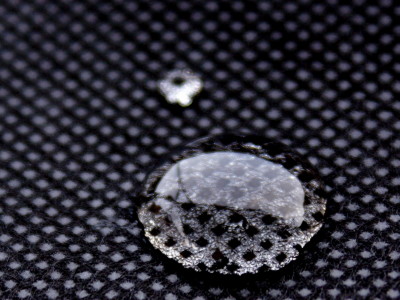Innovative lithium-ion battery technology announced that extends electric vehicle range by 10 times

South Korea's
Layering Charged Polymers Enable Highly Integrated High‐Capacity Battery Anodes - Han - Advanced Functional Materials - Wiley Online Library
https://onlinelibrary.wiley.com/doi/10.1002/adfm.202213458

10x EV Range Boost With Revolutionary Lithium-Ion Battery Technology

Ram's New Electric Pickup Truck Aims for Battery Range of 500 Miles - WSJ
The modern electric vehicle market is experiencing explosive growth, with global sales exceeding approximately $1 trillion (approximately 130 trillion yen) in 2022, and sales in South Korea reaching approximately 108,000 units. It has been reported that. As the electric vehicle market develops, demand for high-capacity batteries that can extend the cruising range of electric vehicles is increasing.
A joint research team from Pohang Institute of Technology and Sogang University has developed a new material that has more than 10 times the capacity of the negative electrode active material used in conventional lithium-ion batteries, while also being stable and reliable (PDF file) We have developed a conductive polymer binder .
The research team's research has made it possible to replace the traditionally used graphite with a silicon anode combined with a layered charged polymer while maintaining stability and reliability.

High-capacity anode materials, such as silicon, have ten times the capacity of lithium-ion batteries using traditional anode materials such as graphite, and are essential for producing high-energy-density lithium-ion batteries. However, until now, it has been known that when
Furthermore, research to date has focused only on `` crosslinking '' and `` hydrogen bonding, '' which link polymers together and change their physical or chemical properties. Chemical crosslinks involve covalent bonds between binder molecules and can make these solids, but once they are broken, the bonds cannot be restored again. Furthermore, hydrogen bonds are secondary bonds between molecules based on differences in electronegativity , and although they can be repaired even if they are broken, they are said to have a weak strength.
Therefore, the research team investigated polymer binders that can effectively control volumetric expansion during reactions. The new polymer developed as a result not only uses hydrogen bonds, but also uses `` Coulomb force '', which uses the attractive force between positive and negative charges. As a result, while having much higher strength than hydrogen bonds, it is also reversible, making it easy to control volume expansion.
Additionally, while the surface of high-capacity anode materials such as silicon is mostly negatively charged, layered charged polymers have alternating positive and negative charges, which allows them to bond effectively with the anode. can do. Furthermore, by introducing polyethylene glycol , which is also used as an insulating material and electrolyte solvent in lithium-ion batteries, we were able to promote the diffusion of lithium ions more than before, and succeeded in charging with a large-capacity electrode and energy density. did.
Sujin Park from the research team said, ``This research has the potential to significantly increase the energy density of lithium-ion batteries and extend the range of electric vehicles by incorporating large-capacity negative electrode materials. Anode materials using this material have the potential to increase range by at least about 10 times over traditional lithium-ion batteries.'

Research to extend the range of electric vehicles is active in the United States as well, and the Ram 1500 REV pickup truck announced by the automaker ' Ram ' has a longer cruising range than conventional electric pickup trucks, with a range of 500 miles (approximately 800 km). )It has been with.
On the other hand, Mike Koval, Ram's brand chief, said, ``Being at the top of the cruising range field may not be the best for electric vehicles,'' and said that the development of electric vehicles that fit the lifestyle of users will continue. This is a message that is more important than increasing distance.
Related Posts:







